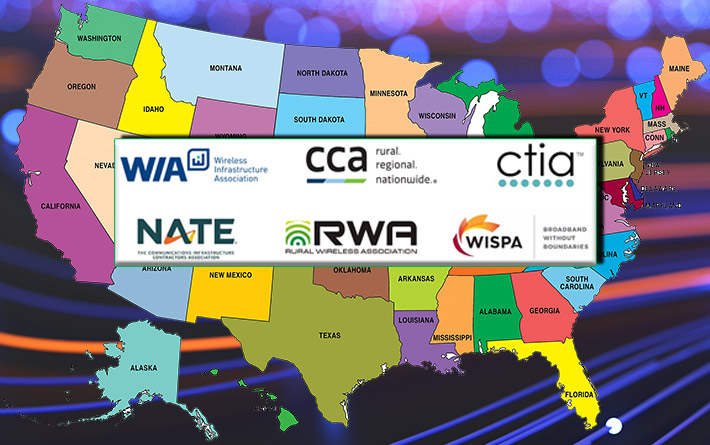
Today, leading organizations representing the wireless industry sent letters to broadband offices in all US states and territories, urging them to allow for maximum flexibility in choosing the right mix of broadband technologies to meet their policy goals with Broadband Equity, Access, and Deployment (BEAD) funds.
Under the BEAD Notice of Funding Opportunity (NOFO), states and territories are required to set an “Extremely High Cost Per Location Threshold” (EHCT). Per the NOFO, as long as a state receives a fiber proposal with a per location cost below this threshold, the state must select it over a non-fiber alternative, regardless of the cost differential and other considerations.
In the letters, the Wireless Infrastructure Association (WIA), Competitive Carriers Association (CCA), CTIA, NATE, Rural Wireless Association (RWA), and WISPA encouraged states and territories to set a sufficiently low EHCT, which would allow broadband offices greater flexibility to choose between different technologies during project planning, instead of being locked into choosing fiber.
“Whatever a state’s priority, it should not tie its hands at the outset by forcing the acceptance of very high-cost fiber projects that will prevent funds from being spent on any other priority for connectivity,” the letters state. By setting a sufficiently low EHCT, states would allow themselves the ability to consider other technologies for funding in addition to fiber, like Fixed Wireless Access (FWA)—one of the fastest growing, high-speed, reliable, and quick-to-deploy broadband solutions on the market.
“Sound policy decisions at the BEAD program design stage are critical for states to give themselves the flexibility to choose the right mix of technology, including fixed wireless solutions, to efficiently close the digital divide,” said WIA President and CEO Patrick Halley.
“The reality is that wireless is oftentimes the fastest, most efficient, and most cost-effective way to bring connectivity to rural and non-urban areas,” said CCA President and CEO Steven K. Berry. “Strategically setting EHCTs will preserve State flexibility to maximize use of BEAD funding. There is broad support in favor of maximum flexibility in choosing the right mix of broadband technologies; it is commonsense policy that will benefit Americans across the country.”
“NATE is pleased to join with WIA and other leading industry organizations in highlighting our collective concerns over the ‘Extremely High Cost Per Location Threshold’ and advocating that the effective, efficient deployment of broadband funds through the IIJA’s BEAD Program, as a means of bringing connectivity to all areas of the country, must by necessity be technology neutral,” said NATE President and CEO Todd Schlekeway. “All available resources should be considered to achieve the national goals of expanding broadband and closing the digital divide, particularly if broadband is to reach rural areas as well as geographically challenging regions, in an efficient and cost-effective manner.”
“Given rural America’s diverse topography, Congress recognized that wireless technology has to be part of the solution,” noted Carri Bennet, RWA’s General Counsel.
“FWA, whether using licensed or unlicensed spectrum or in combination, is reliable broadband,” said David Zumwalt, WISPA President and CEO. “States should use their discretion to set an EHCT at a level that expands their access to as many tools as needed, and in as many locations as possible, to connect those in their states still living on the wrong side of the digital divide.”















